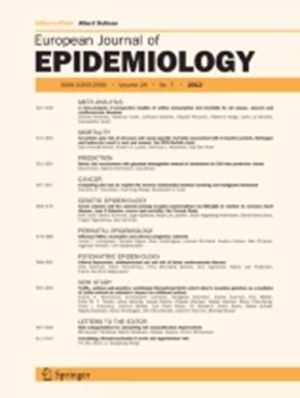激素避孕药的使用与贫血:北欧国家药物流行病学研究。
IF 5.9
1区 医学
Q1 PUBLIC, ENVIRONMENTAL & OCCUPATIONAL HEALTH
引用次数: 0
摘要
世界卫生组织的目标是在全球范围内减少缺铁性贫血。使用现代激素避孕(HC)可以为绝经前妇女提供预防贫血的保护,但在人群水平上的有效性尚不清楚。我们的目标是量化HC对贫血的影响。这项巢式病例对照研究包括2017年芬兰一半以上的育龄女性人口。来自国家处方中心的HC使用数据与来自国家保健登记处的贫血诊断数据相结合。病例(2019-2020年随访期间诊断为贫血)按年龄和城市与多达5名对照进行匹配。在计算最小充分调整集后,在考虑匹配的条件多变量回归模型中导出调整后的优势比。3 100例贫血与13 143例对照。最小充分调整组包括年龄、受教育程度、肥胖、子宫异常出血和癌症。与非HC使用者相比,使用含炔雌醇(0.74[0.66 - 0.83])或雌二醇(0.49[0.35 - 0.68])、纯孕激素口服避孕药(0.42[0.35 - 0.51])、LNG-IUDs(0.64[0.43 - 0.94])和阴道环(0.68[0.49 - 0.94])的联合口服避孕药的贫血风险较低。个体产物效应范围从屈螺酮和炔雌醇的0.77[0.66 - 0.90]到单纯地舒孕酮的0.40[0.32 - 0.48]。使用HC的好处扩大到人口层面的贫血保护。应将贫血保护纳入HC指南,以支持临床决策。本文章由计算机程序翻译,如有差异,请以英文原文为准。
Hormonal contraceptive use and anaemia: a nation-wide pharmacoepidemiological study from Northern Europe.
The WHO aims to reduce iron deficiency anaemia globally. Use of modern hormonal contraception (HC) could offer protection against anaemia in premenopausal women, but population-level effectiveness is unclear. We aim to quantify the effect of HC on anaemia. This nested case-control study includes over half the fertile-aged female population of Finland in 2017. Data on HC use from the national Prescription Center were combined with data on anaemia diagnosis from national care registries. Cases (anaemia diagnosis during follow-up, 2019-2020) were matched with up to five controls by age and municipality. After calculating the minimally sufficient adjustment set, adjusted odds ratios were derived in a conditional multivariable regression model accounting for matching. 3 100 cases of anaemia were matched with 13 143 controls. The minimally sufficient adjustment set included age, education level, obesity, abnormal uterine bleeding, and cancer. Compared to non-users of HC, risk of anaemia was lower in users of combined oral contraceptives containing ethinylestradiol (0·74 [0·66-0·83]) or oestradiol (0·49 [0·35-0·68]), progestin-only oral contraceptives (0·42 [0·35-0·51]), LNG-IUDs (0·64 [0·43-0·94]), and contraceptive vaginal rings (0·68 [0·49-0·94]). Individual product effects ranged from 0·77 [0·66-0·90] for drospirenone and ethinylestradiol to 0·40 [0·32-0·48] for desogestrel-only. Benefits of HC use extend to anaemia protection on population level. Anaemia protection should be included in guidelines on HC to support clinical decision making.
求助全文
通过发布文献求助,成功后即可免费获取论文全文。
去求助
来源期刊

European Journal of Epidemiology
医学-公共卫生、环境卫生与职业卫生
CiteScore
21.40
自引率
1.50%
发文量
109
审稿时长
6-12 weeks
期刊介绍:
The European Journal of Epidemiology, established in 1985, is a peer-reviewed publication that provides a platform for discussions on epidemiology in its broadest sense. It covers various aspects of epidemiologic research and statistical methods. The journal facilitates communication between researchers, educators, and practitioners in epidemiology, including those in clinical and community medicine. Contributions from diverse fields such as public health, preventive medicine, clinical medicine, health economics, and computational biology and data science, in relation to health and disease, are encouraged. While accepting submissions from all over the world, the journal particularly emphasizes European topics relevant to epidemiology. The published articles consist of empirical research findings, developments in methodology, and opinion pieces.
 求助内容:
求助内容: 应助结果提醒方式:
应助结果提醒方式:


